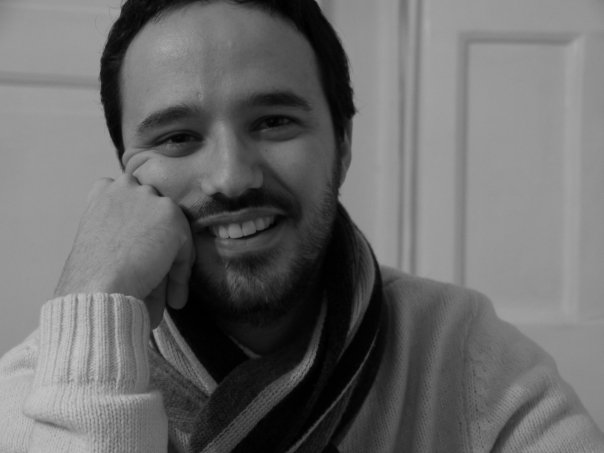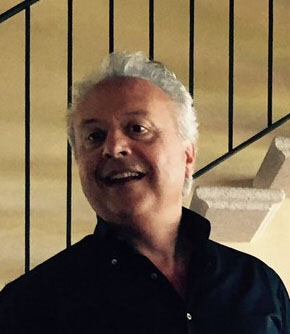Studying at the University of Verona
Here you can find information on the organisational aspects of the Programme, lecture timetables, learning activities and useful contact details for your time at the University, from enrolment to graduation.
Academic calendar
The academic calendar shows the deadlines and scheduled events that are relevant to students, teaching and technical-administrative staff of the University. Public holidays and University closures are also indicated. The academic year normally begins on 1 October each year and ends on 30 September of the following year.
Course calendar
The Academic Calendar sets out the degree programme lecture and exam timetables, as well as the relevant university closure dates..
| Period | From | To |
|---|---|---|
| Sem 1A | Sep 23, 2019 | Oct 31, 2019 |
| Sem 1B | Nov 11, 2019 | Jan 11, 2020 |
| Sem 2A | Feb 17, 2020 | Mar 28, 2020 |
| Sem 2B | Apr 6, 2020 | May 30, 2020 |
| Session | From | To |
|---|---|---|
| Sessione d'esame invernale | Jan 13, 2020 | Feb 15, 2020 |
| Sessione d'esame estiva (gli esami sono sospesi durante la sessione di laurea) | Jun 3, 2020 | Jul 25, 2020 |
| Sessione d'esame autunnale | Aug 24, 2020 | Sep 19, 2020 |
| Session | From | To |
|---|---|---|
| Sessione di laurea estiva | Jul 6, 2020 | Jul 11, 2020 |
| Sessione di laurea autunnale 19-20 | Nov 2, 2020 | Nov 7, 2020 |
| Period | From | To |
|---|---|---|
| Festa di Ognissanti | Nov 1, 2019 | Nov 1, 2019 |
| Sospensione delle lezioni | Nov 2, 2019 | Nov 2, 2019 |
| Festa dell'Immacolata | Dec 8, 2019 | Dec 8, 2019 |
| Vacanze di Natale | Dec 23, 2019 | Jan 6, 2020 |
| Vacanze di Pasqua | Apr 10, 2020 | Apr 14, 2020 |
| Festa della Liberazione | Apr 25, 2020 | Apr 25, 2020 |
| Festa del Lavoro | May 1, 2020 | May 1, 2020 |
| Sospensione delle lezioni | May 2, 2020 | May 2, 2020 |
| Festa del Santo Patrono | May 21, 2020 | May 21, 2020 |
| Sospensione delle lezioni | May 22, 2020 | May 23, 2020 |
| Festa della Repubblica | Jun 2, 2020 | Jun 2, 2020 |
| Vacanze estive | Aug 10, 2020 | Aug 15, 2020 |
Exam calendar
Exam dates and rounds are managed by the relevant Culture and Civilisation Teaching and Student Services Unit.
To view all the exam sessions available, please use the Exam dashboard on ESSE3.
If you forgot your login details or have problems logging in, please contact the relevant IT HelpDesk, or check the login details recovery web page.
Should you have any doubts or questions, please check the Enrollment FAQs
Academic staff
 augusto.barbi@univr.it
augusto.barbi@univr.it

Bassetti Massimiliano
 massimiliano.bassetti@univr.it
massimiliano.bassetti@univr.it
 045802 8376
045802 8376
 andrea.chiurato@univr.it
andrea.chiurato@univr.it
Hatzikiriakos Alexandros Maria
 alexandrosmaria.hatzikiriakos@univr.it
alexandrosmaria.hatzikiriakos@univr.it
 dino.piovan@univr.it
dino.piovan@univr.it
 alberto.scandola@univr.it
alberto.scandola@univr.it
Tani Stefano
 stefano.tani@univr.it
stefano.tani@univr.it
 +39 045802 8110
+39 045802 8110
 luciamaddalena.tissi@univr.it
luciamaddalena.tissi@univr.it
 carlo.vannini@accademiabelleartiverona.it
carlo.vannini@accademiabelleartiverona.it
 gianmaria.varanini@univr.it
gianmaria.varanini@univr.it
Study Plan
The Study Plan includes all modules, teaching and learning activities that each student will need to undertake during their time at the University.
Please select your Study Plan based on your enrollment year.
1° Year
| Modules | Credits | TAF | SSD |
|---|
1 module to be chosen among the following2 modules to be chosen among the following1 module to be chosen between the following2° Year activated in the A.Y. 2020/2021
| Modules | Credits | TAF | SSD |
|---|
2 modules to be chosen among the following1 module to be chosen among the following1 module to be chosen among the following| Modules | Credits | TAF | SSD |
|---|
1 module to be chosen among the following2 modules to be chosen among the following1 module to be chosen between the following| Modules | Credits | TAF | SSD |
|---|
2 modules to be chosen among the following1 module to be chosen among the following1 module to be chosen among the following| Modules | Credits | TAF | SSD |
|---|
Legend | Type of training activity (TTA)
TAF (Type of Educational Activity) All courses and activities are classified into different types of educational activities, indicated by a letter.
Romance philology (m) (2019/2020)
Teaching code
4S02279
Teacher
Coordinator
Credits
6
Language
Italian
Scientific Disciplinary Sector (SSD)
L-FIL-LET/09 - ROMANCE PHILOLOGY AND LINGUISTICS
Period
Sem 2B dal Apr 6, 2020 al May 30, 2020.
Learning outcomes
Instruction in Romance Philology, through reading and analysing literary texts in various romance languages, will allow students to acquire and develop awareness and knowledge in the areas of Philology, Historical Linguistics, and Literary Studies. Close reading and interpretation of literary texts, as well as important elements of critical, historical and cultural judgement, will also be improved. By the end of the course, students should demonstrate an ability to handle independently the different levels of analysis that will be applied to the texts studied as part of the syllabus. Students should furthermore demonstrate an awareness of the terminology of the discipline and present their ideas in the appropriate linguistic style.
Program
The myth of Tristan form the Middle Ages to Modernity. The course aims to provide the main historical-literary coordinates on the birth and development of the medieval myth of Tristan. Once the ecdotic and historical problems related to the Tristanian tradition have been defined and analyzed, we will focus on the analysis, reading and translation of some passages taken from two more ancient ancient French texts: Béroul's "Roman de Tristan" , Thomas's "Roman de Tristan", Bern and Oxford's "Folies Tristan", Maria of France's "Lai du Chevrefoil", up to "Roman de Tristan en prose" and his Italian fortune. The last part of the course will be dedicated to the European fortune of the myth of Tristan and its modern reinterpretations.
BIBLIOGRAPHY
- A. Punzi, Tristano. Storia di un mito, Roma, Carocci, 2005.
- Béroul, Tristano e Isotta, a cura di Gioia Paradisi, Alessandria, Edizioni dell’Orso, 2013 (studio dell'introduzione e lettura del testo in traduzione italiana).
- Tristano e Isotta di Thomas, revisione del testo, traduzione e note a cura di Francesca Gambino, Modena, Mucchi, 2014 (studio dell'introduzione e lettura del testo in traduzione italiana).
- La Follia di Tristano. Redazione del manoscritto di Berna, a cura di C. Concina, Roma, Carocci, 2019.
- A. Vàrvaro, La teoria dell'archetipo tristaniano, «Romania», 88, 1967, pp. 13-58. (available on moodle)
- V. Bertolucci Pizzorusso, La retorica nel Tristano di Thomas, «Studi mediolatini e volgari», 6-7, 1958-59, pp. 25-61 (available on moodle).
- F. Cigni, Tristano e Isotta nelle letterature francese e italiana, in Tristano e Isotta. La fortuna di un mito europeo, a cura di M. Dallapiazza, Trieste, Edizioni Parnaso, 2003, pp. 59-90. (available on moodle)
Further materials will be made available during the course.
| Author | Title | Publishing house | Year | ISBN | Notes |
|---|---|---|---|---|---|
| Anonimo | La follia di Tristano. Redazione del manoscritto di Berna, a cura di C. Concina | Carocci | 2019 | ||
| Valeria Bertolucci Pizzorusso | La retorica nel Tristano di Thomas, «Studi mediolatini e volgari», 6-7, pp. 25-61 | 1958 | Disponibil su moodle | ||
| A. Varvaro | La teoria dell'archetipo tristaniano, «Romania», 88, 1967, pp. 13-58 | 1967 | disponibile su moodle | ||
| Béroul | Tristano e Isotta, a cura di G. Paradisi, | Edizioni dell'Orso | 2013 | 9788862744508 | |
| Thomas | Tristano e Isotta di Thomas, revisione del testo, traduzione e note a cura di F. Gambino | Mucchi | 2014 | 9788870006384 | |
| F. Cigni | Tristano e Isotta nelle letterature francese e italiana, in Tristano e Isotta la fortuna di un mito europeo, a cura di M. Dallapiazza, pp. 29-129 | Trieste, Edizioni Parnaso | 2003 | disponibile su moodle | |
| A. Punzi | Tristano. Storia di un mito | Carocci | 2005 |
Examination Methods
Final oral examination.
The oral examination aims at evaluating the student's knowledge, with special reference to the texts read during the lectures; general knowledge of the companions in use will be checked, as well.
Erasmus students will be informed during the lectures about the oral examination.
Due to the Coronavirus pandemic, and in accordance with the University of Verona guidelines, during the 2020 summer session the assessment modality will be modified as follows: [online oral exam: Zoom].
Type D and Type F activities
| years | Modules | TAF | Teacher |
|---|---|---|---|
| 1° 2° | The origins of Christianity | F |
Augusto Barbi
(Coordinator)
|
| years | Modules | TAF | Teacher |
|---|---|---|---|
| 1° 2° | Laboratory of ancient greek | F |
Dino Piovan
(Coordinator)
|
| 1° 2° | Latin Laboratory | F |
Giulia Beghini
(Coordinator)
|
| 1° 2° | Opera Workshop | F |
Nicola Pasqualicchio
(Coordinator)
|
| 1° 2° | Presente e futuro del pianeta. economia, sostenibilità e politiche | F |
Gian Maria Varanini
(Coordinator)
|
| years | Modules | TAF | Teacher |
|---|---|---|---|
| 1° 2° | The origins of Christianity | F |
Augusto Barbi
(Coordinator)
|
| years | Modules | TAF | Teacher |
|---|---|---|---|
| 1° 2° | Convegno internazionale “la questio de aqua et terra di dante alighieri: testo e contesto” | F |
Paolo Pellegrini
(Coordinator)
|
| 1° 2° | Laboratory of ancient greek | F |
Dino Piovan
(Coordinator)
|
| 1° 2° | Latin Laboratory | F |
Giulia Beghini
(Coordinator)
|
| 1° 2° | Opera Workshop | F |
Nicola Pasqualicchio
(Coordinator)
|
| 1° 2° | Presente e futuro del pianeta. economia, sostenibilità e politiche | F |
Gian Maria Varanini
(Coordinator)
|
| 1° 2° | Un patrimonio urbano da ri-conoscere e ri-valutare: ville e palazzi storici di verona e circondario | F |
Gian Maria Varanini
(Coordinator)
|
| years | Modules | TAF | Teacher |
|---|---|---|---|
| 1° 2° | Giornate fai di primavera (1 cfu) | F |
Monica Molteni
(Coordinator)
|
| 1° 2° | Laboratory of photo | F |
Carlo Vannini
(Coordinator)
|
| 1° 2° | Laboratory of ancient greek | F |
Dino Piovan
(Coordinator)
|
| 1° 2° | Humanistic informatics laboratory (m) | F |
Stefano Minozzi
(Coordinator)
|
| 1° 2° | Latin Laboratory | F |
Giulia Beghini
(Coordinator)
|
| 1° 2° | Worshop for cultral events | F | Not yet assigned |
| years | Modules | TAF | Teacher |
|---|---|---|---|
| 1° 2° | Fai un giro in villa (1 cfu) | F |
Monica Molteni
(Coordinator)
|
| 1° 2° | Laboratory of ancient greek | F |
Dino Piovan
(Coordinator)
|
| 1° 2° | Humanistic informatics laboratory (m) | F |
Stefano Minozzi
(Coordinator)
|
| 1° 2° | Latin Laboratory | F |
Giulia Beghini
(Coordinator)
|
| 1° 2° | Worshop for cultral events | F | Not yet assigned |
| years | Modules | TAF | Teacher |
|---|---|---|---|
| 1° 2° | Summer School internazionale in Studi danteschi Ravenna-Verona | F |
Paolo Pellegrini
(Coordinator)
|
| 1° 2° | Univero’ 2019 | F | Not yet assigned |
Career prospects
Module/Programme news
News for students
There you will find information, resources and services useful during your time at the University (Student’s exam record, your study plan on ESSE3, Distance Learning courses, university email account, office forms, administrative procedures, etc.). You can log into MyUnivr with your GIA login details: only in this way will you be able to receive notification of all the notices from your teachers and your secretariat via email and soon also via the Univr app.
Graduation
List of theses and work experience proposals
| theses proposals | Research area |
|---|---|
| tesi di Glottologia, Storia comparata, Linguistica storica | ENGLISH LANGUAGE - Grammar and Syntax – Grammatik und Syntax |
| tesi di Glottologia, Storia comparata, Linguistica storica | GERMANIC LANGUAGE - Dialectology - Dialektologie |
| tesi di Glottologia, Storia comparata, Linguistica storica | HUMANITIES & SOCIAL STUDIES - HUMANITIES & SOCIAL STUDIES |
| tesi di Glottologia, Storia comparata, Linguistica storica | Indo-European languages & literatures - Indo-European languages & literatures |
| tesi di Glottologia, Storia comparata, Linguistica storica | LINGUISTICS - LINGUISTICS |
Gestione carriere
Linguistic training CLA
Double Degree
The University of Verona, through a network of agreements with foreign universities, offers international courses that enable students to gain a Double/Joint degree at the time of graduation. Indeed, students enrolled in a Double/Joint degree programme will be able to obtain both the degree of the University of Verona and the degree issued by the Partner University abroad - where they are expected to attend part of the programme -, in the time it normally takes to gain a common Master’s degree. The institutions concerned shall ensure that both degrees are recognised in the two countries.
Places on these programmes are limited, and admissions and any applicable grants are subject to applicants being selected in a specific Call for applications.
The latest Call for applications for Double/Joint Degrees at the University of Verona is available now!
Student mentoring
Requisiti classi di abilitazione insegnamento
Requisiti necessari per accedere alle classi di abilitazione per l'insegnamento.
vedi allegato pdf
Inoltre, per informazioni sui 24 CFU nelle discipline antropo-psico-pedagogiche e nelle metodologie e tecnologie didattiche, si veda -> LINK
Documents
| Title | Info File |
|---|---|
|
|
pdf, it, 307 KB, 30/11/21 |




































